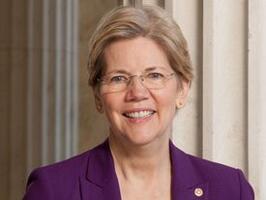Looking Closer at the Massachusetts Senate Polls
Analysis by Scott Rasmussen
On the surface, three recent polls on the upcoming Massachusetts special election to fill the Senate seat of the late Edward M. Kennedy seem to tell three different stories.
A Rasmussen Reports poll, released last week, shows Democrat Martha Coakley leading Republican challenger Scott Brown by nine points. Two new polls released over the weekend show wildly different toplines. A Boston Globe poll puts Coakley up by 17 points, while a survey by Public Policy Polling (PPP) finds Brown ahead by a single point.
As always, it’s important to look at what the polls have in common to learn the real lessons from the data. A closer look at all three shows a lot of common ground.
(Want a free daily e-mail update ? If it's in the news, it's in our polls). Rasmussen Reports updates are also available on Twitter or Facebook.
First, all three surveys show Coakley right around the 50% mark. The Rasmussen poll has her right at 50%, while the Globe shows her three points higher and PPP three points lower. If Coakley is truly right around the 50% mark, then the race is hers to lose, and Brown’s best possible scenario is a very narrow victory.
Second, all the polls show that a lower turnout is better for Brown. In the Rasmussen poll, Coakley leads by nine overall, but Brown pulls to within two points among those who are certain to vote. In the Globe poll, Coakley leads by 17 overall, but among those who are “extremely interested” in the election, it’s 47% for Brown and 47% for Coakley. PPP shows a toss-up but suggests it’s close because of low turnout among Democrats.
Finally, the Globe poll and the Rasmussen poll show identical vote totals for candidates other than Coakley. The Rasmussen poll finds 41% for Brown and did not mention a third-party candidate by name. The Globe shows 36% for Brown and five percent (5%) for independent candidate Joe Kennedy. It’s interesting that both polls show 41% of the vote going to a candidate other than Coakley.
That fact becomes even more interesting when you note that third-party candidates generally poll better than they actually perform. True to form, the Globe poll found that only a tiny percentage of voters are committed to actually sticking with the independent candidate. If those voters actually show up on election day, it’s quite likely that most will vote for Brown.
One reason the race is a bit closer than expected is that all three polls show Massachusetts voters are divided over the health care plan before Congress. The Rasmussen poll shows a very slight majority of likely voters in favor of the plan. The Globe puts backing for the congressional effort 10 points lower but still enough to muster a plurality of support. The PPP poll suggests that among those likely to show up and vote, a plurality is opposed to the proposed health care legislation.
Still, if this were a regularly scheduled election with other races on the ballot, Coakley would win handily. The turnout questions would not be as challenging for pollsters, and other races would bring Democrats to vote regardless of their enthusiasm about the Senate race.
But in a special election, turnout is typically much lower and always much harder to project. Collectively, the data suggests that Coakley remains the favorite, but Brown has attracted enough support to remain competitive. With just over a week to go, it is possible that a candidate mistake could dramatically shake up the race.
As always, turnout in special elections is very difficult to project, so all projections must be made with caution. Absent a major event, it is still possible to envision a long-shot, low-turnout scenario where Brown pulls out a very narrow victory.
Clearly, his supporters are more enthusiastic about the race and that gives him a chance. But, as they have from the beginning, the dynamics of the race still make it likely that Massachusetts voters on January 19 will send another Democrat to Washington.
Please sign up for the Rasmussen Reports daily e-mail update (it’s free) or follow us on Twitter or Facebook. Let us keep you up to date with the latest public opinion news.
Rasmussen Reports is a media company specializing in the collection, publication and distribution of public opinion information.
We conduct public opinion polls on a variety of topics to inform our audience on events in the news and other topics of interest. To ensure editorial control and independence, we pay for the polls ourselves and generate revenue through the sale of subscriptions, sponsorships, and advertising. Nightly polling on politics, business and lifestyle topics provides the content to update the Rasmussen Reports web site many times each day. If it's in the news, it's in our polls. Additionally, the data drives a daily update newsletter and various media outlets across the country.
Some information, including the Rasmussen Reports daily Presidential Tracking Poll and commentaries are available for free to the general public. Subscriptions are available for $4.95 a month or 34.95 a year that provide subscribers with exclusive access to more than 20 stories per week on upcoming elections, consumer confidence, and issues that affect us all. For those who are really into the numbers, Platinum Members can review demographic crosstabs and a full history of our data.
To learn more about our methodology, click here.



